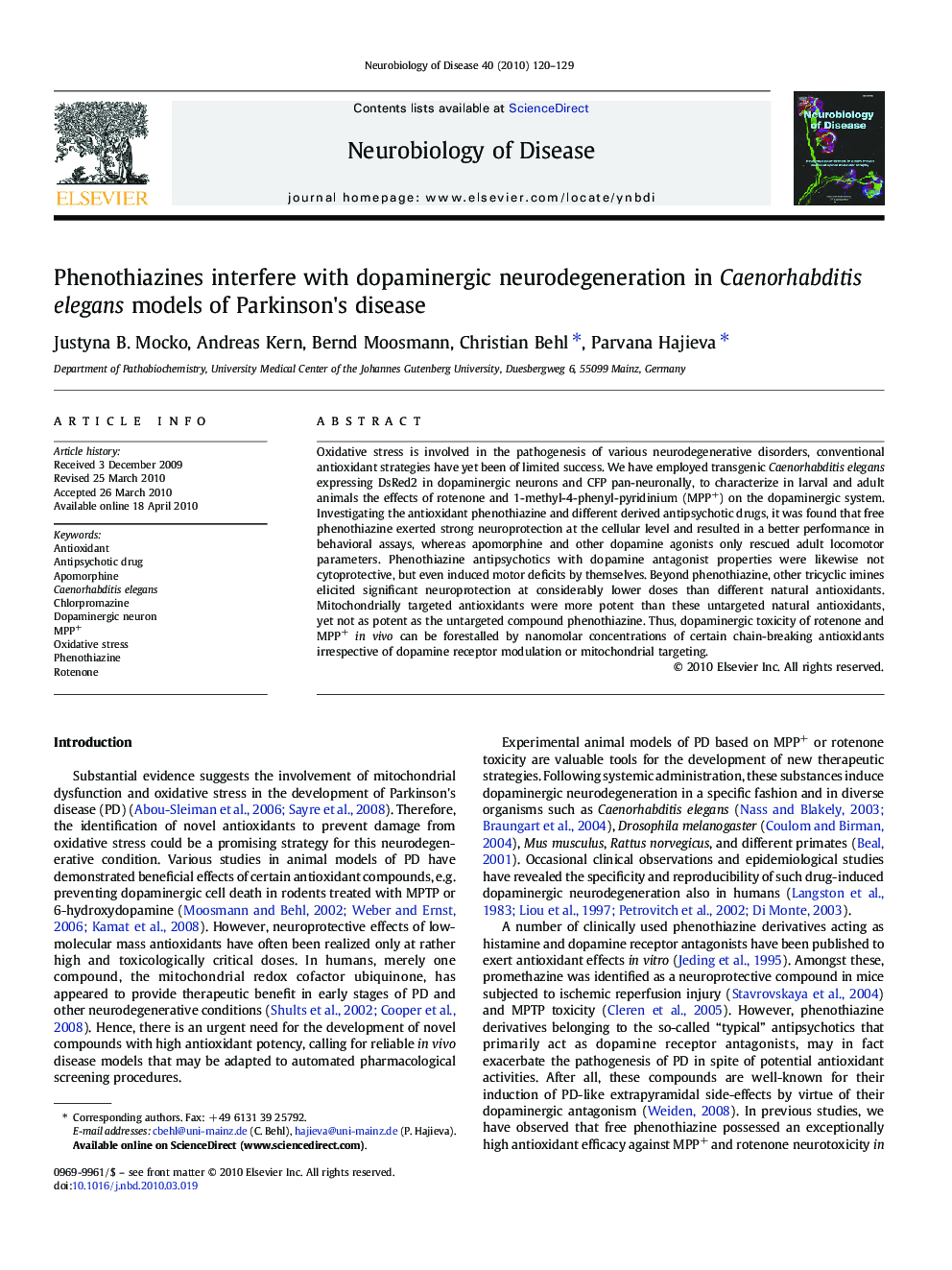| Article ID | Journal | Published Year | Pages | File Type |
|---|---|---|---|---|
| 3069834 | Neurobiology of Disease | 2010 | 10 Pages |
Oxidative stress is involved in the pathogenesis of various neurodegenerative disorders, conventional antioxidant strategies have yet been of limited success. We have employed transgenic Caenorhabditis elegans expressing DsRed2 in dopaminergic neurons and CFP pan-neuronally, to characterize in larval and adult animals the effects of rotenone and 1-methyl-4-phenyl-pyridinium (MPP+) on the dopaminergic system. Investigating the antioxidant phenothiazine and different derived antipsychotic drugs, it was found that free phenothiazine exerted strong neuroprotection at the cellular level and resulted in a better performance in behavioral assays, whereas apomorphine and other dopamine agonists only rescued adult locomotor parameters. Phenothiazine antipsychotics with dopamine antagonist properties were likewise not cytoprotective, but even induced motor deficits by themselves. Beyond phenothiazine, other tricyclic imines elicited significant neuroprotection at considerably lower doses than different natural antioxidants. Mitochondrially targeted antioxidants were more potent than these untargeted natural antioxidants, yet not as potent as the untargeted compound phenothiazine. Thus, dopaminergic toxicity of rotenone and MPP+in vivo can be forestalled by nanomolar concentrations of certain chain-breaking antioxidants irrespective of dopamine receptor modulation or mitochondrial targeting.
